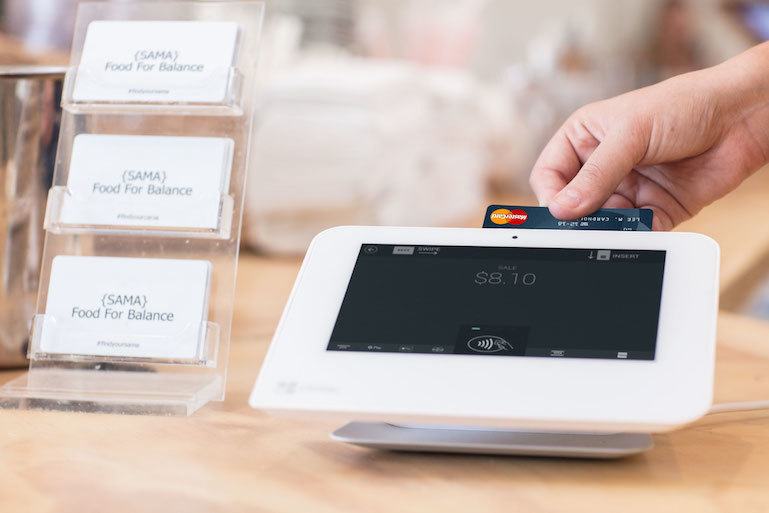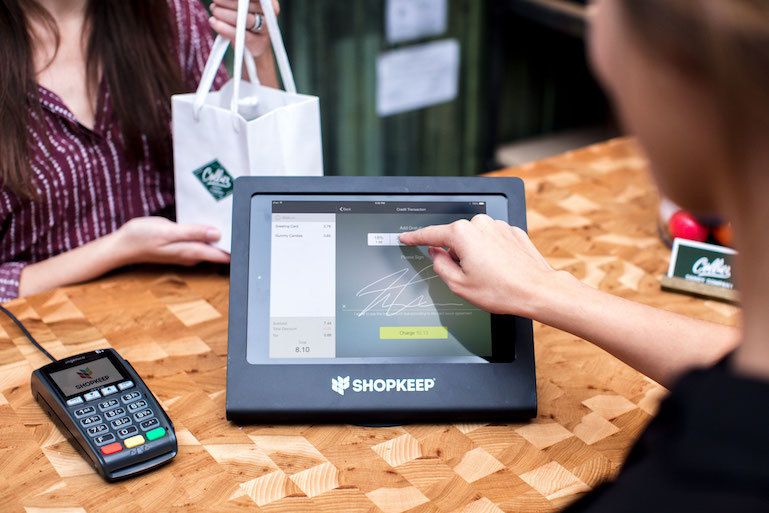
Is Square Credit Card Processing a Good Deal for My Business?
As a small business owner, you’ve probably heard of Square or Square Up. There’s a good reason for that.
They effectively flipped the credit processing paradigm on its head by making it far easier for businesses to accept credit card payments, and they’re incredibly popular because of that.
As a retailer or restaurateur, you might be wondering, “Is Square credit card processing a good deal for my business?” Up front, the answer to that question is, “Maybe.” Don’t worry, in this post, we’ll get into all of the details.
Unavoidable Fees
Before we get into our comparison of different credit card pricing models, I want to define two terms quickly:
- Interchange Fees – these are fees charged by banks that issue credit cards
- Assessment Fees – these are fees charged by the credit card companies (Visa, Mastercard, etc.)
Interchange fees and assessment fees are both unavoidable. There’s no negotiating them down. Because of this, these fees are passed onto you, the merchant, by your credit card processor, regardless of the type of processing you choose. The big difference is that certain pricing structures clearly list these fees for you on your statement. This level of transparency helps the merchant better understand why they’re paying what they are for each transaction.
SEE ALSO: How to Save on Credit Card Processing Fees
Types of Credit Card Processing
To evaluate whether or not Square’s credit card processing product is a good fit for your business, it’s helpful to first understand the various types of credit card processing that are available to merchants.
Flat Rate Processing
Let’s get this out of the way first: Flat rate processing is the type of credit card processing that Square offers. But they aren’t the only business to do so. Brands like PayPal and others also offer flat rate processing.
The basic idea behind this payment processing model is that merchants pay the same flat rate for every credit card transaction that they accept. Typically this fee is structured as a percentage of the transaction value plus a smaller per transaction fee. For example, 2.5% plus $0.10 per transaction. An additional wrinkle is that if you key-in a transaction instead of swiping it, you’ll pay a higher rate. It’ll likely be somewhere in the 3% range.
The benefit of this pricing model is simplicity. There are no overly complex credit card statements to decipher at the end of the month. Plus, your processing costs are relatively static, making it easy to project cost on a month-to-month basis. This can be helpful for managing cash flow.
The other advantage is that some companies, Square included, don’t charge always charge an additional transaction fee. For example, if you use Square’s Reader or Stand products you won’t be charged a per transaction fee. It should be noted that you will be charged a higher flat rate than if you use one of their other (more expensive) hardware products.
This lack of a transaction rate can be helpful for high-volume, low-ticket businesses. A good example is a popular coffee shop. They’ll likely pay less for credit card processing with this pricing model than some of the others we’ll discuss.
The downside is that flat rate processing is a more expensive approach for most businesses. In fact, if you don’t fall into the high-volume, low-ticket bucket, you can almost always save money by going with a different payment processing pricing model.
SEE ALSO: How Merchant Services Work: The Ultimate Guide
Bundled Pricing or Tiered Pricing
Bundled pricing or tiered pricing is exactly what it sounds like. A merchant’s transactions will fall into several rate buckets, commonly called qualified, mid-qualified, and non-qualified rates. Respectively, these buckets also rank from the lowest rate to the highest.
This is good for the merchant because there’s the possibility of saving money if your transactions fall into the qualified bundle, and possibly even the mid-qualified bundle. It should be noted that each bundle is comprised of the interchange fee, the assessment fee, and whatever markup the processor wants to choose.
The downside is that processors don’t give much insight into the various fees and the processor’s own markup that comprise each bundle. This makes it difficult for a merchant to shop around to compare different processors against one another to find the best rates.
Similarly, processors usually don’t reveal much of the criteria that dictate which bundle a transaction falls into. This can make it very difficult to ensure that the bulk of your transactions fall into the qualified bundle, which is the most affordable. Furthermore, since processors choose which bundle a transaction falls into, malicious ones can make more money off of you just by routing your transactions to their desired rate.
In summary, on the surface, it looks like bundled pricing has the potential to save a merchant money, and that might be true. But you’ll need to run the numbers for your own business, while also finding a way to work with an honest processor. Otherwise, you can very easily find that few of your transactions qualify for the lowest rate, costing you valuable revenue.

Interchange-Plus Pricing
Sometimes referred to as pass-through pricing, interchange-plus pricing is the most transparent pricing model. When you look at your monthly statement, you’ll see exactly what you’re paying and why. Assessment fees, the interchange rate, transaction fees, and processor markup are all clearly laid out for you.
Outside of helping you understand what you’re paying and why this transparency makes interchange-plus processing a smart choice for merchants for a variety of reasons.
Transparency enables competition. Because fees and charges aren’t hidden from the merchant, it’s processors are forced to compete on price and service. This allows you to shop around to find the processor that offers the best service for the lowest cost.
Transaction optimization is possible. Since you know the exact fees that apply to each type of transaction, it’s much easier to ensure that the bulk of your transactions are processed at the lowest possible rate.
The only real potential downside to interchange-plus pricing is that high-volume, low transaction size merchants, can sometimes find cheaper processing if they choose a processor that offers flat-rate processing. This is because of the transaction fee point we mentioned earlier. In some cases, flat rate processors don’t charge a transaction fee, while interchange-plus processors almost always will.
Other Factors to Consider
While pricing is a huge factor when comparing Square versus other payments providers, it isn’t the only factor. For retailers, restaurants, coffee shops and other food-service buildings, payment processing is part of a much larger ecosystem. And the payment processor you choose often has a direct influence over the rest of that ecosystem.
Payment Processing Hardware
Processing credit card, debit card, and other electronic payments methods like EMV chip cards, or contactless payments like Apple Pay or Google Pay require specific hardware. If you want to accept all of those methods (and we recommend you do) you’ll need to ensure that the credit card reader you choose has those capabilities.
Most processors will sell or lease you a card reader when you sign up for their service. Typically these are made by third party companies. A popular one is Ingenico. Square is a little bit different in that they manufacture their own hardware. This does have a few benefits. It ensures that there’s a tight integration between the processor and hardware, which can help with reliability. Square’s hardware also features a distinctly modern aesthetic, which looks very different from standard credit card readers. Looks aren’t everything, but they’re important to some businesses.
So, when deciding if Square is a good deal or right for your business, you’ll want to look at hardware as well. Do they offer hardware that allows you to accept the payment methods you want to? Is it priced competitively? If design is important to you, do you like Square’s and does it with your overall aesthetic?
Payments and Point of Sale Software
I think it’s safe to say that if you’re looking at Square, then you’re likely interested in the software side of payments processing too. This is typically referred to as point of sale (POS) software While it’s outside the scope of this post to tell you everything you need to know about evaluating and choosing POS software, we will give you some tips for getting started.
First, you’ll want to pick a solution that covers all of the bases in terms of features. Here are some of the common boxes you’ll want to check:
- Register component (for accepting payments)
- Inventory management
- Reporting and analytics
- Employee management
- Customer marketing
If you’re in and out of your business often, it might also be worth looking for a solution that includes an app for monitoring your business from your smartphone.
In addition to baseline features, you’ll also want to consider the depth of these features. If you’re a new business owner, then basic features might be enough for you. Though, there’s a good chance you’ll outgrow a basic solution in short order. If you’re an established, sophisticated business, then you’ll want to find POS software that can support your business needs.
Going back to our original question, it should be noted that Square Point of Sale is on the more basic side of POS software. They really started as a payment processor, and then tacked on POS software as they’ve tried to expand their service to larger businesses.
Customer Service
As much as we hate to say it, things do go wrong from time to time. In these cases, it’s great to have a customer service team you can contact at the drop of a hat. This is particularly true when the problem is with your payment processing as you’re likely losing revenue until it’s resolved.
Every business is going to have different needs and expectations from their credit card processor’s support team. Before signing up for one, it’s important that you do this too. The last thing you want to do is expect support to be there when you have an issue and find out you need to wait until the next business day to resolve your issue.
With that in mind, it’s helpful to know that Square only offers phone support from 6 am to 6 pm Pacific Time. Outside of those hours, you can communicate with their support team via email or social media. Lastly, they offer a self-help knowledge base of tutorials and articles for common issues.
If this is the level of support you expect from a payment processor, then Square may be a good fit for your business. However, you expect more, then you’ll need to consider working with a different payment processor.
SEE ALSO: What is Square Up? And is it Really Right for Your Business?
Is Square’s Credit Card Processing a Good Deal For Your Business?
Now that you understand the full scope of the payment processing landscape from rates to hardware to software and support, it’s time to decide if Square is a good deal for your business. For most merchants, the bulk of that decision is going to come down to pricing. Does Square’s flat rate make sense for your business? As we mentioned before, if you’re a high-volume, low-ticket business, there’s a solid chance that it does. However, you’ll want to run the numbers yourself to confirm that. For other businesses, there’s a good chance that an interchange-plus processor is going to offer you the best rates.
Outside of price, you’ll want to consider your needs for hardware, software, and customer support. Compared to other vendors, Square definitely comes up short in a few of these areas, particularly software and support. You’ll need to take a look at your business and goals to decide what specifically you need in these areas, as well as whether Square can work for you or not.
Lastly, we encourage you to consider not just what you need today, but also what you think you’ll need in the future. Square is limited in many ways so even if they work for you now, there’s a good chance you’ll outgrow them in short order. Your only choice at that point is starting the tedious process of moving to a brand new processor.
Want to try ShopKeep for yourself?
Just answer a few easy questions.
Need help finding the right point of sale?
Just complete the form. We’ll call you right back to explain how ShopKeep can work for you.
Hit the ground running.Sprinting, in fact!
Read our free, comprehensive guide, Small Business 101, to learn all you need to know about starting a thriving business.

